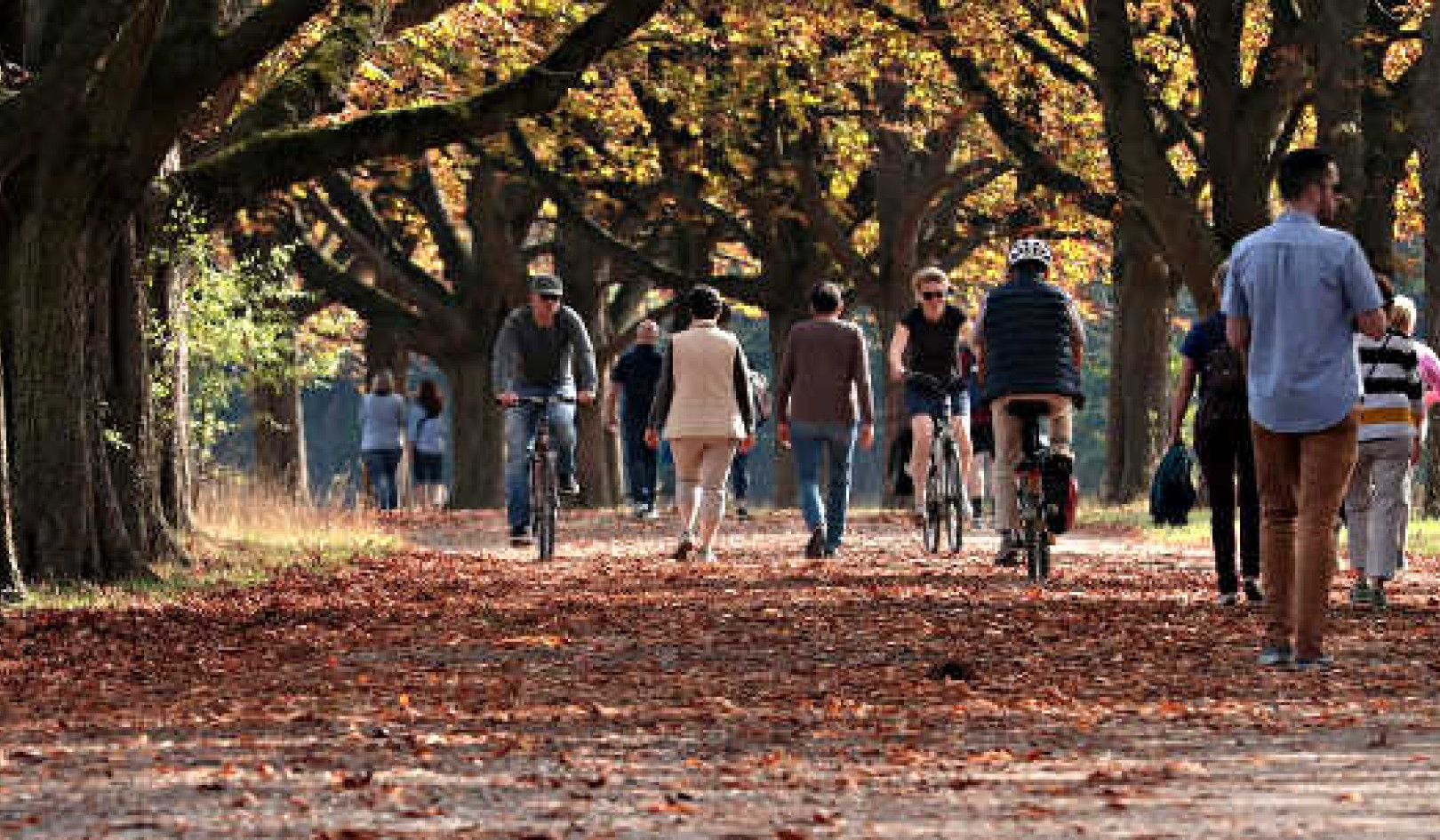
Throughout our lives we long to love ourselves more deeply and to feel connected with others. Instead, we often contract, fear intimacy, and suffer a bewildering sense of separation. We crave love, and yet we are lonely. Our delusion of being separate from one another, of being apart from all that is around us, gives rise to all of this pain. What is the way out of this?
Spiritual practice, by uprooting our personal mythologies of isolation, uncovers the radiant, joyful heart within each of us and manifests this radiance to the world. We find, beneath the wounding concepts of separation, a connection both to ourselves and to all beings. We find a source of great happiness that is beyond concepts and beyond convention.
Freeing ourselves from the illusion of separation allows us to live in a natural freedom rather than be driven by preconceptions about our own boundaries and limitations.
The Liberation of the Heart is Love
The Buddha described the spiritual path that leads to this freedom as "the liberation of the heart which is love," and he taught a systematic, integrated path that moves the heart out of isolating contraction into true connection. That path is still with us as a living tradition of meditation practices that cultivate love, compassion, sympathetic joy, and equanimity. These four qualities are among the most beautiful and powerful states of consciousness we can experience. Together they are called in Pali, the language spoken by the Buddha, the brahma-viharas. Brahma means "heavenly. "Vihara means abode" or "home." By practicing these meditations, we establish love (Pali, metta), compassion (karuna), sympathetic joy (mudita), and equanimity (upekkha) as our home.
I first encountered the practice of the brahma-viharas when I was introduced to Buddhism in 1971 in India. I had joined many other people in what turned out to be a significant migration of Westerners seeking the spiritual teachings of the East. I was very young, but my longing for a deeper understanding of life and of the suffering I had already endured drew me there.
One thing we did encounter was more suffering as we faced the extremes of climate and tropical illnesses of India. Several years later, after a number of us had founded the Insight Meditation Society in Barre, Massachusetts, a friend with whom I had spent several years in India was talking to one of the physicians working at the local clinic in Bane. She was describing the terrible heat in the summers of New Delhi, when the temperature can exceed 110 degrees. One summer, when she was trying to renew her visa, she was forced to go from government office to government office in that intense heat. My friend was explaining to the doctor that she had been especially weak that summer because she was just recovering from being afflicted with hepatitis, amebic dysentery, and worms. I can remember the doctor looking at her, absolutely appalled, and saying "You had all those diseases and you were trying to renew your visa! What were you doing, holding out for leprosy?"
Internal Experience Outweighs External
On the face of it our sojourn in India was indeed a story of disease, discomfort, and a heroic effort (or foolish determination) to carry on. But despite those physical sufferings my friend was relating, I know that her internal experience was one of sheer magic. Our time in India, completely outside of our customary social pretenses or mannered responses, allowed each of us an entirely new look at ourselves. Through meditation practice, many of us came into initial contact with our own capacity for goodness and felt the elation of discovering a new connection with all beings. I cannot imagine anything that I would be willing to trade for that discovery — no money, no power over others, no trophies or accolades.
That year, sitting under the Bodhi Tree in Bodh Gaya, where the Buddha attained enlightenment, I voiced my aspiration to realize the gift of love that the Buddha himself had realized and embodied. The brahma-viharas — love, compassion, sympathetic joy and equanimity — are that very gift, and the opportunity to practice them is the legacy of the Buddha. By following this path we learn to develop skillful mental states and let go of unskillful ones.
Developing Integrity, Love, and Awareness
The integrity we develop on a spiritual path comes from being able to distinguish for ourselves the habits and influences in the mind which are skillful and lead to love and awareness, from those which are unskillful and reinforce our false sense of separation. The Buddha once said:
Abandon what is unskillful. One can abandon the unskillful. If it were not possible, I would not ask you to do it. If this abandoning of the unskillful would bring harm and suffering, I would not ask you to abandon it. But as it brings benefit and happiness, therefore I say, abandon what is unskillful.
Cultivate the good. One can cultivate the good. If it were not possible, I would not ask you to do it. If this cultivation were to bring harm and suffering, I would not ask you to do it. But as this cultivation brings benefit and happiness, I say, cultivate the good.
Abandoning unskillful states that cause suffering is not something we do out of fear of or contempt for those states, or out of contempt for ourselves for having those states arise in the mind. Abandoning the unskillful isn't accomplished by angrily shoving or pushing away our habits of separation. Rather it comes as we learn to truly love ourselves and all beings, so that love provides the light by which we bear witness to those burdens, watching them simply fall away.
I Let Go of Anger and Fear
Rather than obsessively following states of mind such as anger, fear, or grasping, states that will bring harm to ourselves and others, we can let go as though dropping a burden. We are indeed burdened by carrying around habitual unskillful reactions. As wisdom reveals to us that we don't need these reactions, we can abandon them.
Cultivating the good means recovering the incandescent power of love that is present as a potential in all of us. An awakened life demands a fundamental re-visioning of the limited views we hold of our own potential. To say that we cultivate the good means that we align ourselves with an expansive vision of what is possible for us, and we use the tools of spiritual practice to sustain our real, moment to moment experience of that vision.
The Capacity for Love and Happiness
This vision is always available to us; it doesn't matter how long we may have been stuck in a sense of our limitations. If we go into a darkened room and turn on the light, it doesn't matter if the room has been dark for a day, or a week, or ten thousand years — we turn on the light and it is illumined. Once we contact our capacity for love and happiness — the good — the light has been turned on. Practicing the brahma viharas is a way of turning on the light and then tending it. It is a process of deep spiritual transformation.
This transformation comes from actually walking the path: putting the values and theories into practice, bringing them to life. We make the effort to abandon the unskillful and cultivate the good with the conviction that in fact we can be successful. "If it were not possible, I would not ask you to do it." Remembering this statement of the Buddha, we walk the path knowing that each of us is capable of actualizing our singular potential for love and truth.
Cultivating Right Speech and Right Action
The path begins with cultivating appreciation of our oneness with others through generosity, non harming, right speech, and right action. Then, on the foundation of these qualities, we purify our minds through the concentration practices of meditation. As we do, we come to experience wisdom through recognizing the truth, and become deeply aware of the suffering caused by separation and of the happiness of knowing our connection with all beings. The culmination of this recognition is called by the Buddha "the sure heart's release." Coming to an understanding of the true nature of the heart and of happiness is the fulfillment of a spiritual path. The practice of the brahma-viharas is both a means to this understanding and a natural expression of it.
My own intensive practice of the four brahma-viharas began in Burma in 1985. Under the guidance of Sayadaw U Pandita, a Theravada meditation master, my days were completely devoted to nurturing and cultivating love, compassion, sympathetic joy, and equanimity. What extraordinary days! That protected period of retreat so clarified and strengthened the brahma-viharas that when the retreat was over, I found that they did not erode but had truly become my home. At times, of course, I lose touch with these qualities, but my homing instinct for happiness now brings me back to them.
Reprinted with permission of the publisher,
Shambhala Publications, Inc. ©1995.
www.shambhala.com
Article Source:
Loving-Kindness: The Revolutionary Art of Happiness
by Sharon Salzberg.
 The author draws on simple Buddhist teachings, wisdom stories from various traditions, guided meditation practices, and her own experience from twenty-five years of practice and teaching to illustrate how each one of us can cultivate love, compassion, joy, and equanimity—the four "heavenly abodes" of traditional Buddhism.
The author draws on simple Buddhist teachings, wisdom stories from various traditions, guided meditation practices, and her own experience from twenty-five years of practice and teaching to illustrate how each one of us can cultivate love, compassion, joy, and equanimity—the four "heavenly abodes" of traditional Buddhism.
Info/Order this book.
About the Author
 SHARON SALZBERG has been practicing Buddhist meditation for twenty-five years. She is a cofounder of the Insight Meditation Society in Barre, Massachusetts, and teaches meditation around the country. Visit her website at https://www.sharonsalzberg.com/
SHARON SALZBERG has been practicing Buddhist meditation for twenty-five years. She is a cofounder of the Insight Meditation Society in Barre, Massachusetts, and teaches meditation around the country. Visit her website at https://www.sharonsalzberg.com/
More Books by this Author:
at InnerSelf Market and Amazon




























